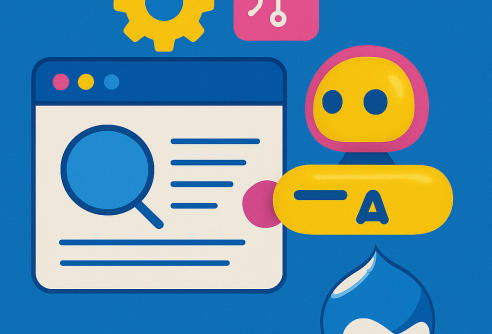AI-powered personalisation
How best to go about writing an article about AI-powered personalisation - I know a fair amount, that's why I’m here writing this, but maybe I could brush up a bit on the topic first?
Let’s start with a Google search - maybe find some interesting recent articles. By the time I’m staring at the search listing, I’ve already been subjected to the magic - Google’s AI has found some articles and, bless their revenue model, they’re buried under a heap of sponsored results - AI personalisation at work, even if it’s not quite the intelligence I want.
So AI personalisation is with us and working its way down the food chain as it gets cheaper to use and its ability to add value when working on smaller and smaller data sets develops. The moral of the story - at some point, whatever the size of your site and the amount of traffic you have, AI is going to become a useful tool as you look to develop audience engagement.
In this week’s article, we’ll walk you through the high-level concepts so you understand what to think about and what questions you might want to start asking yourself.
Your audience is time-poor and has little curiosity to spare - they will judge you on your ability to deliver what they need without wasting their time. Improving user experience on websites with lower volumes of traffic, involves a variety of tools and platforms, each catering to specific needs like personalization, support, optimization, and content management.
What’s interesting here is that your new contact points with AI are not through engaging with it directly, but through understanding that the established software vendors of the tools you use are incorporating AI into their products for you. All you need to do is realise they are there and, over time, learn how to use them.
Remember that this is a two-way street - the more we engage with these features, the more the software vendors can tailor the AI they are adding and the more useful they become. This is a voyage of discovery for everyone and the time to start that voyage is now.
Here's a breakdown of the types of tools that are starting to incorporate AI:
- Personalization and Recommendation Engines
- Algolia: Offers powerful search and discovery features that can be used to personalise user experiences on websites.
- Dynamic Yield, Optimizely, and Adobe Target: These platforms provide personalization and A/B testing tools to tailor content and recommendations to individual user preferences.
- Chatbots and Virtual Assistants
- Dialogflow (by Google) and Microsoft Bot Framework: These platforms allow the development of conversational agents that can interact with users, providing support and guidance.
- Intercom and Drift: Offer chatbot solutions that can automate customer service and engagement directly on your website.
- User Experience Optimization
- Crazy Egg and Hotjar: These tools offer heatmaps, session recordings, and user feedback tools to understand how users interact with your site and identify areas for improvement.
- Google Analytics and Mixpanel: Provide detailed insights into user behaviour that can be analysed to optimise website layouts, navigation, and content.
- Content Optimization and Creation
- OpenAI's GPT-3: Useful for generating written content, from blog posts to product descriptions, tailored to the style and tone of the website.
- Canva's Magic Write: Aids in creating engaging visual content and accompanying text for various platforms, including websites.
- Predictive Analytics
- IBM Watson Analytics: Offers predictive models that can forecast trends and user behaviour, helping in making data-driven decisions for the website.
- Salesforce Einstein: Provides AI-powered analytics for CRM, which can be leveraged for predictive insights about customer preferences and behaviour on a site.
- Accessibility Improvements
- AccessiBe and UserWay: These platforms use AI to automatically make websites more accessible, adjusting elements like navigation, colour contrast, and text for users with disabilities.
- SEO and Marketing Automation
- HubSpot and Marketo: Offer marketing automation tools that use AI to optimise email campaigns, social media posts, and other marketing efforts based on user behaviour and preferences.
- SEMRush and Ahrefs: Include AI-driven SEO tools for keyword research, content optimization, and competitive analysis to improve search engine visibility.
When integrating these AI-enhanced tools into a website, it's still essential to consider the specific goals you want to achieve, such as improving user engagement, personalising content, enhancing support, or optimising website layout and performance. AI can help, but it can’t (yet) strategise.
Finally, and again - AI-enhanced or not - each tool or platform has its strengths and can be used individually or in combination to improve the user experience for websites with lower volumes of traffic. The job of figuring that out is still yours!






